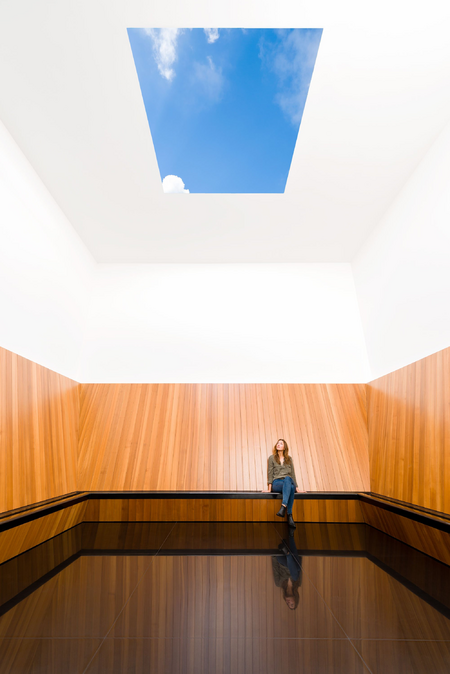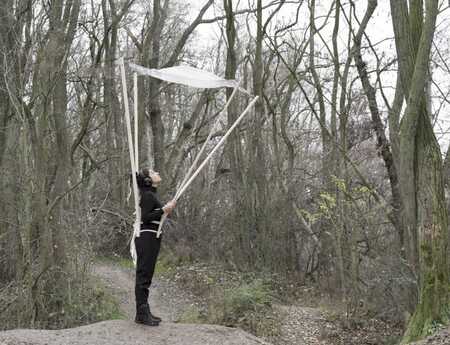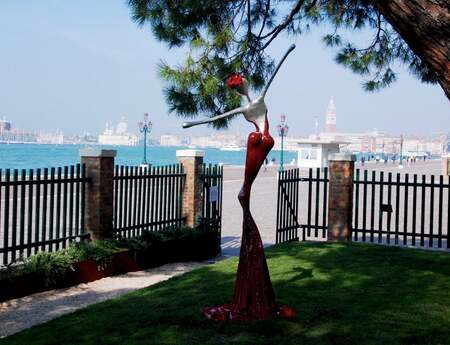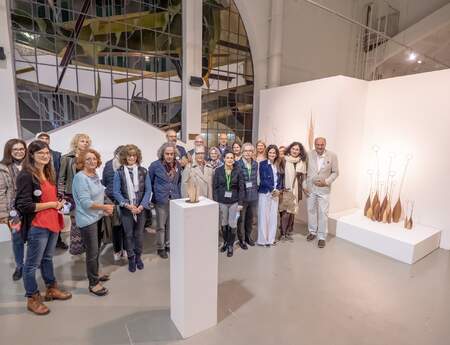Light and Sculpture
"Light on Sculpture" is our theme for 2020. After having dealt with the dark side of sculpture in November, our guest author Ursula Karpowitsch and project manager Martina Fischer are now taking a closer look at the importance of light in three-dimensional art.
"Fiat lux", let there be light, says Genesis. The act of creation in the world is essentially linked to the birth of light. And theories about light have been developed since ancient times. But it took another 2000 years before scientists came to the conclusion that light wave and quantum are simultaneously immaterial and material. Light and dark, light and shadow. Light has mostly positive connotations, although we now speak of light pollution when we no longer see stars in the big cities, yet there are an enormous amount of neon signs. Photography draws with light. "Light in architecture" fills library volumes just as much as "light in painting". Rembrandt's chiaroscuro, Caravaggio's dramatic light production, and the light of the moment in the Impressionists' work are all representations of this.
The Giacometti exhibition in Wolfsburg (at the end of 2010/beginning of 2011) subtitled Der Ursprung des Raumes (The Origin of Space) argues that the Swiss sculptor is the inventor of virtual space. There, a circular room with a diameter of about eight meters, was built for the "Tumbling Man" in order to provoke the viewer, who "tumbles along" in search of inner balance. Giacometti differentiates between viewer space and individual space, while James Turrell speaks of "Sensing Space", the space in which the viewer is flooded with diffused light, and "Viewing Space", the space in which the viewer looks and which dissolves into light and color so that the eye can no longer find a hold and causes the viewer to "stumble". The catalog explicitly refers to Turrell's suggestion for the conception of the exhibition The Wolfsburg Project and, of course, works from his oeuvre are also shown. One is called Bridget's Bardo, Ganzfeld Piece, and is from 2009. Ganzfelder are spaces that are bathed in uniform, all-enveloping light.
Turrell studied perceptual psychology, art, astronomy, and mathematics. In 2013, the American artist transformed the entire rotunda of the Guggenheim Museum into a skylight installation. There are 26 works worldwide, including skyspaces. A skyspace is a room with an opening in the ceiling so that the open sky is visible. The opening can be circular, elliptical or square.
Light can be used for torture, as well as, for healing. Enlightenment experiences and near-death experiences are always associated with light. We are aware of the importance of the waking-sleeping rhythm and its pathogenic tendencies during night and shift work. We treat SAD, Seasonal Affective Disorder, the so-called "winter depression", with light. Doctors at the University Children's Hospital in Zurich approached Turrell and he created a walk-in room for his young patients in the form of an elliptical cylinder, heated seats on the sides, and a floor area large enough to accommodate a hospital bed. In the roof area there is an invisible circumferential light installation and in the dome roof there is an elliptical opening that leads directly into the sky.
Born into a Quaker family in 1943, he remembers long meditation sessions with his grandmother in the meeting house. He stared at the ceiling and wished the roof would open so that he could see the sky. He conquered the sky as a place of longing later as an adult by training to become a pilot. Turrell himself calls his light aircraft his studio. In the early 1970s, he discovered the approximately 400,000-year-old Roden Crater, an extinct volcanic cinder cone in Arizona. Since then he has been working on creating a monumental work of art and celestial observatory out of it. Some rooms and tunnels are already finished. During the day you can see the sun through the skyspaces, at night the planets and stars. When completed, the crater will contain 21 rooms and 6 tunnels. Of course, such a mammoth project cannot be completed without donations. There were slumps during the financial crash in 2008, but since then donations are flowing again. In addition, he now works with Arizona State University, which promotes interdisciplinary projects. The research concerns both the Navajo Indians, who used to inhabit the desert, and prehistoric times, as well as "astronomy" and related fields of science.
There are also major projects on the subject of light in Europe. One example is the Amsterdam Light Festival, which was launched in 2012. During these festivals (this year until mid-January), there are various light installations by international artists in the whole city. The current 8th edition will take place under the title DISRUPT! The light installations set impulses – deliberately also disturbing impulses – and thus draw attention to social issues and current developments. The negative moment of disturbance becomes the impetus for important discourses or new perspectives.
It was not only last year that the impact of natural catastrophes on our reality and our perception of the world became increasingly apparent. Floods in Venice, devastating fires in the Amazon rainforest and currently in Australia – news that we now encounter almost daily and yet cannot be allowed to become normal.
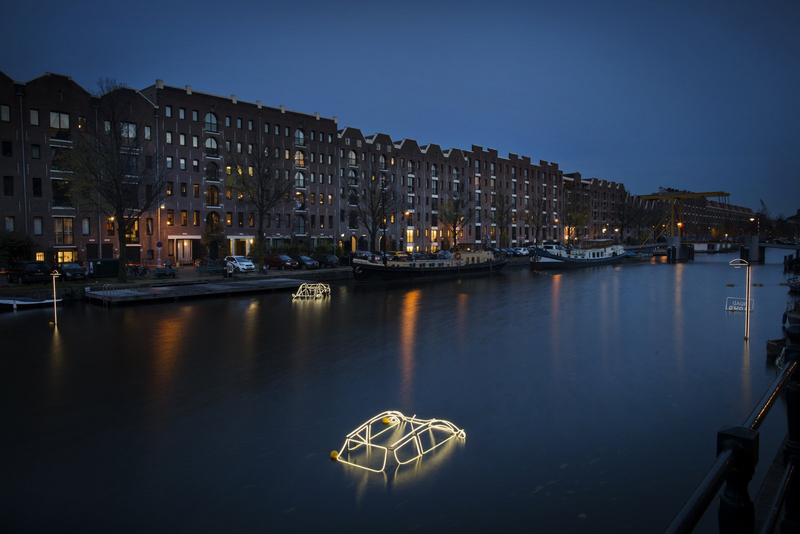
In Amsterdam, many of the 20 exhibited works of art deal with climate change, its manifestations, its consequences and its media reception. For example, the installation "Surface Tension" by Tom Biddulph and Barbara Ryans, in which the catastrophic scenario of a flood is transferred into our immediate surroundings as a real danger through the abstract silhouettes of cars, lampposts and street signs. "Atlantis" by Utskottet also deals with this theme: the legend of the sunken city of Atlantis is illustrated with miniatures of existing buildings. In addition to the Empire State Building in New York, the A'dam Tower in Amsterdam can also be seen. The globality of the buildings shows the globality of the hazard.
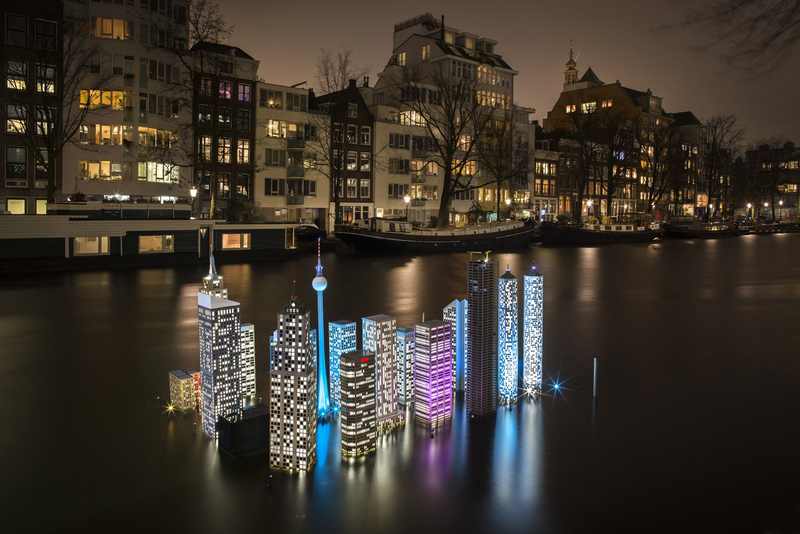
At the end let's let James Turrell have his say again: "Light has an enormous power. And we are connected to it in a very original way. Other than it being so powerful, the opportunities to actually feel its effect are very rare. I shape this material as much as I can. I want to use it in such a way that you can physically feel it, that you can really feel the presence of light, of light that fills a room."
Title: James Turrell, Skyspace (2016), Museum Voorlinden, Wassenaar. Photo: Antoine van Kaam
